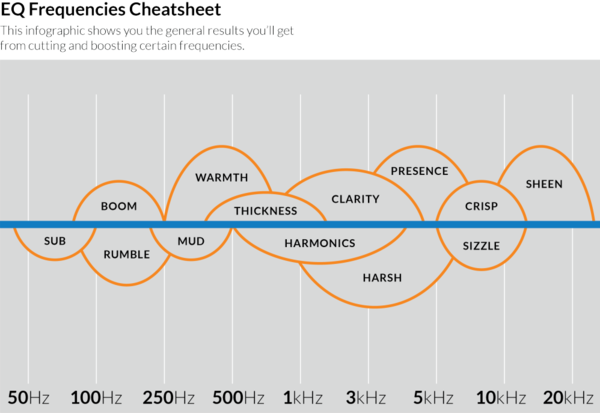Arcane University:Audio Basics
Sounds and Music, as well as voices are described with attributes which can be interpreted. For a clear and concise understanding, there are standards like this scheme.
Sound Waves
As you might already know, sound travels in waves. This wave is simply a collective motion of any set of particles. Most often, we hear sound waves traveling through air. Air is by far the most competent sound carrier since it’s very light and can move fast. Because that’s essentially what sound is all about; movement. A sound is a constantly ongoing collection of different vibrating cycles, playing at different pitches and volumes. Let’s dive deeper into what one of these waves looks like and how it functions. A sound wave starts at “zero”, moves up to its maximum amplitude (loudness), then proceeds back down to repeat the same motion, but inverted, on the “negative axis”, after which the sound wave rises back up to zero. That might sound very confusing. Have a look at this graph:
If you’re familiar with maths, you might’ve seen this before. This wave is called a sine wave. The line in the middle is the “zero”. If a sound wave were to stay at that line, and not go up or down at all, it would be fully quiet. So, that middle line, that “zero”, is pure silence. In this image, the wave goes up and down, both movements extending to a certain distance away from the zero line. This maximum distance is called a sound wave’s amplitude. It’s simply a way of measuring how loud a sound wave is. So, the height of a wave is what determines how loud it is. A sound wave’s pitch is determined by a different factor. Pitch is controlled by the speed of a wave. This speed is measured in the amount of vibrations per second, measured in Hertz (Hz). Basically, a wave with a frequency of 1 Hz experiences one full cycle per second. A full cycle is a wave travelling from zero, to maximum positive, down to maximum negative, back to zero, exactly as displayed in the image above. Let’s say the wave in the image above has a frequency of 1 Hz. The wave’s amplitude is on the Y axis, the time is on the X axis. Let’s say that the time displayed in this graph is exactly 1 second. If I were to change that wave from 1Hz to 2Hz, we’d actually see 2 of these waves fitting in the exact same amount of time, like this (ignore the numbers):
This wave has a higher pitch than the previous one because it has a faster vibration, a higher frequency. So, the faster a sound wave vibrates, the more full cycles it completes per second, the higher the pitch. The human ear can typically hear from 20Hz to 20000Hz. However, whilst anything below 20Hz can’t really be heard well, it can mainly just be felt. These very deep frequencies, ranging from 1Hz to about 60Hz, are the reason your whole body shakes when at a loud concert. This frequency range is called the “sub region”. We’ll dive back into these so-called “frequency regions” later on.
The sine wave is the purest form of sound in the universe. Every sound you will ever hear, no matter how complex, is built out of a TON of these waves, each individually playing at different amplitudes and frequencies, to form one fuller, more complex sound altogether. You may be curious as to what a sine wave sounds like. Here’s one, played at 579Hz.
